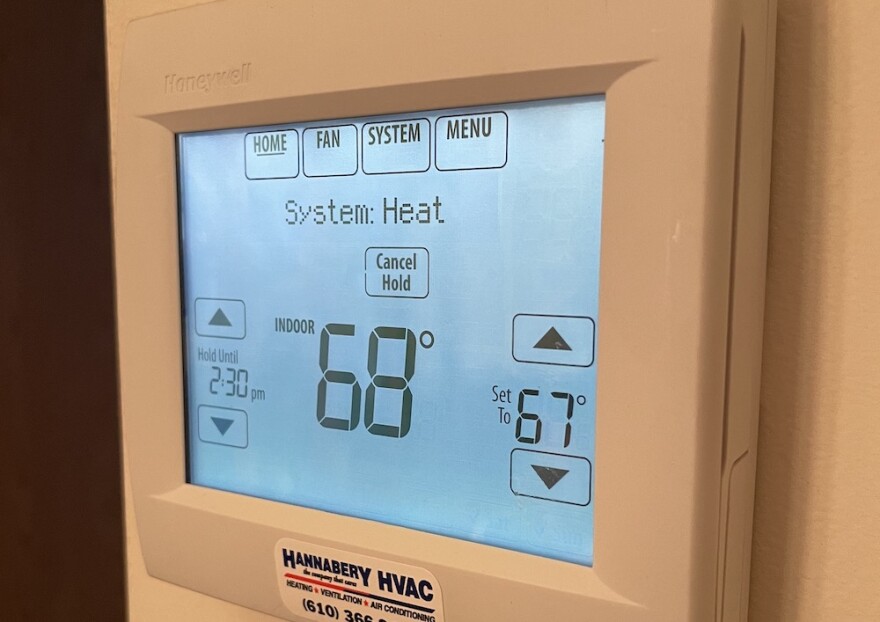ALLENTOWN, Pa. — In both Pennsylvania and the surrounding region, a perfect storm is brewing in the energy sector. Rising demand for electricity and retiring power plants are on a collision course, and if Pennsylvania does not take action now, the reliable power we all depend on is at risk.
With every passing month, this impending supply/demand imbalance, often referred to as a gap in resource adequacy, has risen in importance and Pennsylvania lawmakers, regulators and electric utility companies are highlighting the need for action. I recently spoke at the Senate Democratic Policy Committee hearing to share PPL Electric Utilities’ thoughts on resource adequacy and recommended solutions.
The importance of ensuring that Pennsylvanians have access to safe, reliable and reasonably priced electricity cannot be overstated. Every home, business and industry depend on a steady supply of power — whether it’s keeping the lights on for customers, supporting a local factory or ensuring our hospitals stay operational.
"Unless new generation resources come online to meet significant projected increases in customer usage, our region, and possibly the state itself, will lack sufficient power generation resources ..."Christine Martin, PPL Electric Utilities' president
But in just a few short years, unless new generation resources come online to meet significant projected increases in customer usage, our region, and possibly the state itself, will lack sufficient power generation resources, leading to more expensive and less reliable electric service.
The problem is twofold. First, a substantial portion of the existing generation portfolio in PJM, the regional transmission organization for 13 states, including Pennsylvania, is at risk of retirement in the coming years. According to a March 2023 report from PJM, up to 40,000 megawatts of existing generation could retire as soon as 2028 without firm replacement resources in place. Second, we are expecting a dramatic increase in the amount of electricity customers use, driven largely by data centers and the growing trend of electrification across industries.

A matter of law
PPL Electric and other regulated electric utilities in Pennsylvania own and operate the poles and wires that deliver electricity to customers and have a legal duty to deliver adequate, efficient, safe and reliable service at reasonable rates. However, under current law, your local utility is not allowed to own and operate electric generation assets, such as power plants or renewable resources. In Pennsylvania, customers can choose to shop for their generation supply or have it purchased on their behalf by their regulated utility. Regardless, regulated electric utilities are obligated to deliver electric service safely and reliably to all customers at fair and reasonable rates. Generators in PJM have no similar obligation to serve.
For nearly three decades, our state’s electricity generation market has been reliant on competitive generators to meet demand and respond to market forces determining where and when new generation will come online. Yet, as we see today, those market forces are failing to deliver.
"While the market was designed to lower costs for customers by encouraging competition, the system is no longer working as intended."
While the market was designed to lower costs for customers by encouraging competition, the system is no longer working as intended. This is evidenced by the skyrocketing power supply prices driven by increasing capacity market clearing prices — up more than eightfold from $28.92 per megawatt-day in 2024 to $269.92 per megawatt-day in 2025 — and recently highlighted in a complaint filed by Gov. Josh Shapiro. This increase represents about a $15 per month increase to the supply portion of the bill for an average residential customer in PPL Electric’s service territory.
Unfortunately, further supply market price increases are expected. Despite these higher prices, not enough new generation is being built in the short timeframe it is needed to offset these higher prices. That means our customers are paying, and will continue to pay, significantly more for generation on their electric bills. This is a fundamental flaw in how the PJM capacity market works.
Updates needed
The question now is: How can we avoid a resource adequacy crisis in Pennsylvania? PPL Electric believes the answer lies in putting the power to address resource adequacy back in Pennsylvania’s hands by updating the state’s decades-old energy laws.
The time is now to adopt a modern, comprehensive state energy policy. We cannot simply wait for the market to “fix” the issue, especially when that same market is failing to bring new generation capacity online in a timely manner. PJM is working on market reforms, and while these are steps in the right direction, they are unlikely to address the immediate crisis facing Pennsylvania and our region.
We believe Pennsylvania must take charge of its energy future rather than being wholly reliant on a regional market and merchant generators to deliver critical generation resources. PPL Electric proposes a more moderate, state-focused approach that will enable Pennsylvania to implement a “no regrets” strategy that addresses impending energy shortfalls and provides the state with additional tools to help protect customers from price volatility and reliability concerns.
One way to do this is to allow regulated electric utilities to invest in generation resources, up to and including owning and operating generation resources again. This would complement the competitive market by addressing resource adequacy gaps, rather than relying solely on market forces to deliver a solution.
The current model no longer meets the needs of Pennsylvanians. If we do not act now, we risk further price spikes, generation shortages, and, ultimately, service disruptions. The solution to our looming resource adequacy crisis lies in striking a balance, one that does not abandon market principles, but provides a safety net to ensure that consumers are not left in the dark. It is time to give Pennsylvania the tools it needs to secure its energy future, before it is too late.
Christine Martin is president of PPL Electric Utilities, which provides electric-delivery services to 1.5 million customers in eastern and central Pennsylvania, including parts of the Lehigh Valley.

